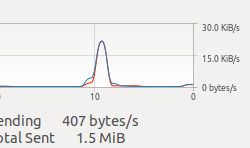Posted by Mick B1 on 07/08/2018 12:51:24:
Posted by Andrew Tinsley on 07/08/2018 12:35:19:
I am amazed that people can take up fixed positions on this topic. I am equally at home with Imperial and metric dimensions and sometimes even mix them together on a drawing!
There is nothing difficult in either system. Neither is logical if you delve into them. At this point I will take cover.
Andrew.
No need. I think there are plenty of us to give you covering fire… 
First of all, let me confess I'm not really the anti-Imperial zealot I'm pretending to be! Please put away your pitchforks.
That said, making the case for the prosecution, I have to point out that the defence so far consists of:
- Works OK for me within limited boundaries
- It's simple
Neither hold much water. There's an analogy in map making. If I draw a plan of my garden, I can assume the earth is flat because the error caused by the curvature of the earth is tiny. If I draw a map of the whole village, the error is still trivial. Problem solved, or not? This is very like most people's experience of the Imperial System. Provided you stay within it's limitations, they don't matter.
Unfortunately, like map making, problems appear when you move beyond simple requirements. If I assume the world is flat, my map will be detectably wrong when I'm 10km from home, and it will be badly wrong at 100km, and laughable at 1000.
The case against the Imperial system is that it doesn't cope at all well with complex problems due to multiple internal inconsistencies. Because its a combination of 'Horses for Courses' systems, it doesn't hang together. As the difficulty of representing the real world with numbers increases, Imperial makes the problem worse, because those horses have to run together.
This isn't about inches vs mm being used in a workshop. For simple linear measurements, it doesn't matter. Nor does it matter if you think about lifting a lathe in kilograms or pounds.
Fans of the Imperial system are invited to explore a more difficult example and to share the results. In the metric system (MKSA), the volt is a derived unit. It is defined in terms of Length, Mass, Time and Amperes. In the simplified version of Imperial used for engineering (FPS), what is the Imperial definition of a volt? Once that's been done, what's the relationship between the imperial volt and the Horse Power. Explain how the imperial system has made the exercise easy.
Now the point is I don't care much what a volt 'is' in my workshop. But I hope it's understood that in engineering more widely, the definition matters very much indeed. The definition isn't arbitrary and volts can be made accurately made anywhere in the world from base standards. Not something you would do in your shed but a real problem nonetheless.
A further point about the volt, is that it's become part of the Imperial team. Sadly, it's a cuckoo in the nest in that it's not based on Imperial measure. There are other examples.
Looking into Imperial more deeply, it can't be said to be simple. Long practice may have made it's basic features familiar, but that doesn't mean it's simple once you've scratched the surface.
If you own an imperial workshop, work on imperial models, and think in imperial there's no reason to change. But please don't believe that Imperial is 'better' than metric, and please don't attempt to foist imperial as a working system on youngsters.
Dave
Neil A.


 and in other cases either metric or imperial materials are hard to find. My mental arithmetic is far too slow for this, so I have made and laminated sheets showing 64ths/thou/mm and refer to them frequently.
and in other cases either metric or imperial materials are hard to find. My mental arithmetic is far too slow for this, so I have made and laminated sheets showing 64ths/thou/mm and refer to them frequently.


